Researchers have developed a houseplant that can clean the air in our homes. This houseplant rids the air of some molecules that even HEPA air filters cannot remove.
Artificial filters cannot remove, for example, benzene and chloroform, which prior studies have linked to cancer.
Researchers from the University of Washington have genetically modified pothos ivy (Epipremnum aureum), a common houseplant. The new houseplant removes benzene and chloroform from the air. The modified houseplant expresses 2E1, a protein that transforms these compounds into molecules that it can subsequently use to support its growth.
Long Zhang, Ryan Routsong, and Stuart E. Strand wrote about their work in the journal Environmental Science & Technology (citation below).
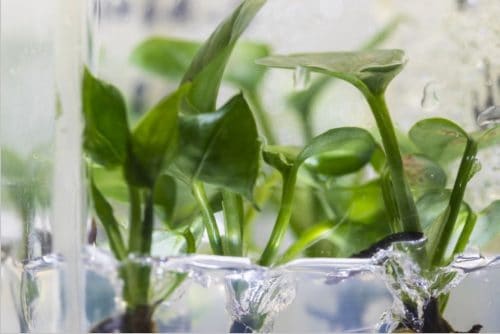
Houseplant removes hazardous organic compounds
Senior author, Stuart Strand, a Research Professor in the University of Washington’s Civil and Environmental Engineering Department, said:
“People haven’t really been talking about these hazardous organic compounds in homes, and I think that’s because we couldn’t do anything about them. Now we’ve engineered houseplants to remove these pollutants for us.”
The researchers decided to use cytochrome P450 2E1, a protein that is present in humans and other mammals. In our bodies, P450 2E1 (2E1 for short) turns benzene into phenol, a chemical. It also turns chloroform into CO2 (carbon dioxide) and chloride ions.
However, 2E1 is located in a mammal’s liver, including the human liver. It is turned on when we consume alcohol. Therefore, it is not available to help us process air pollutants.
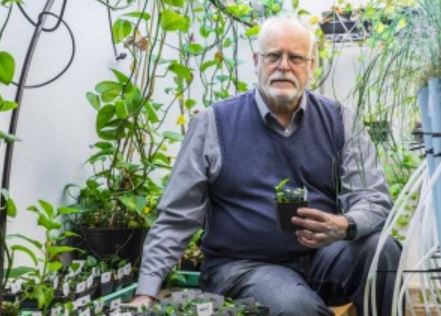
2E1 can be good for the houseplant
Prof. Strand said:
“We decided we should have this reaction occur outside of the body in a plant, an example of the ‘green liver’ concept. And 2E1 can be beneficial for the plant, too. Plants use carbon dioxide and chloride ions to make their food, and they use phenol to help make components of their cell walls.”
The research team synthesized a version of the gene that serves as instructions for creating the rabbit form of 2E1. They then introduced it into the houseplant (pothos ivy) so that all its cells expressed the protein.
In temperate climates, pothos ivy doesn’t flower. Therefore, the genetically modified houseplant can’t spread via pollen.
Lead author Long Zhang, a Research Scientist in the Civil and Environmental Engineering Department, said:
“This whole process took more than two years. That is a long time, compared to other lab plants, which might only take a few months. But we wanted to do this in pothos because it’s a robust houseplant that grows well under all sort of conditions.”
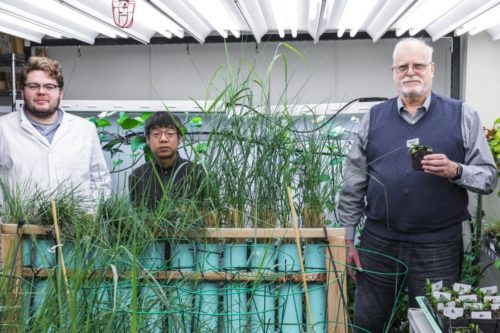
Comparing modified and unmodified plants
The research team then tested how well their modified houseplant could remove the pollutants from the air compared to a natural (unmodified) pothos ivy. They put both types of houseplants in glass tubes. They then added either chloroform gas or benzene into each tube.
Over a period of eleven days, the researchers monitored the pollutant concentrations in each tube.
In the tubes with the unmodified plants, pollutant concentrations did not change over time. However, in the tubes with the modified plants, chloroform concentrations fell by 82% after three days. By day six, chloroform was undetectable.
Benzene concentrations also declined, but more slowly. Within eight days, benzene concentrations had fallen by approximately 75%.
In their study, the scientists used higher-than-normal levels of pollutants so that they could detect the changes. However, they expect that the levels in the air of people’s homes would decline similarly. They might even fall faster over the same time frame.
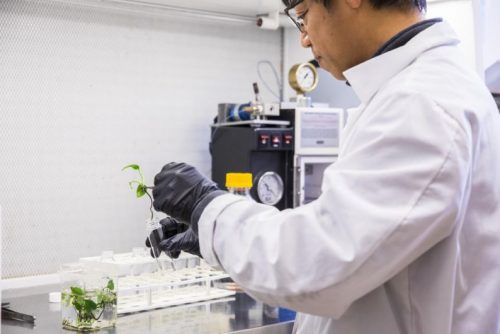
Houseplant needs airflow
In the home, the houseplant would need to be inside an enclosure. That enclosure would need a device, such as a fan, to move air past the leaves, Prof. Strand said.
Prof. Strand said:
“If you had a plant growing in the corner of a room, it will have some effect in that room,” he said. “But without air flow, it will take a long time for a molecule on the other end of the house to reach the plant.”
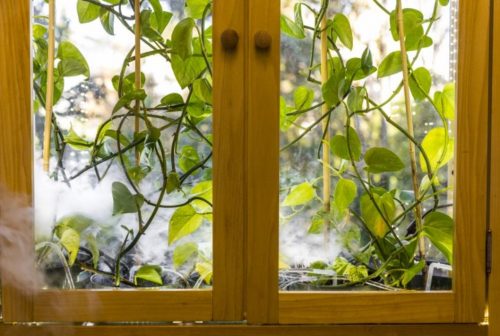
Next – break down formaldehyde
The scientists are currently trying to further modify the houseplant to break down formaldehyde. Formaldehyde is present in tobacco smoke, laminate flooring, cabinets, and other wood products.
Prof. Strand said:
“These are all stable compounds, so it’s really hard to get rid of them. Without proteins to break down these molecules, we’d have to use high-energy processes to do it.”
“It’s so much simpler and more sustainable to put these proteins all together in a houseplant.”
Amazon Catalyst at UW, the National Science Foundation, and the National Institute of Environmental Health Sciences funded the study.
Citation
“Greatly Enhanced Removal of Volatile Organic Carcinogens by a Genetically Modified Houseplant, Pothos Ivy (Epipremnum aureum) Expressing the Mammalian Cytochrome P450 2e1 Gene,” Long Zhang, Stuart E. Strand, and Ryan Routsong. Environmental Science and Technology, Article ASAP. DOI: 10.1021/acs.est.8b04811. Publication Date (Web): December 19, 2018. Copyright © 2018 American Chemical Society.

